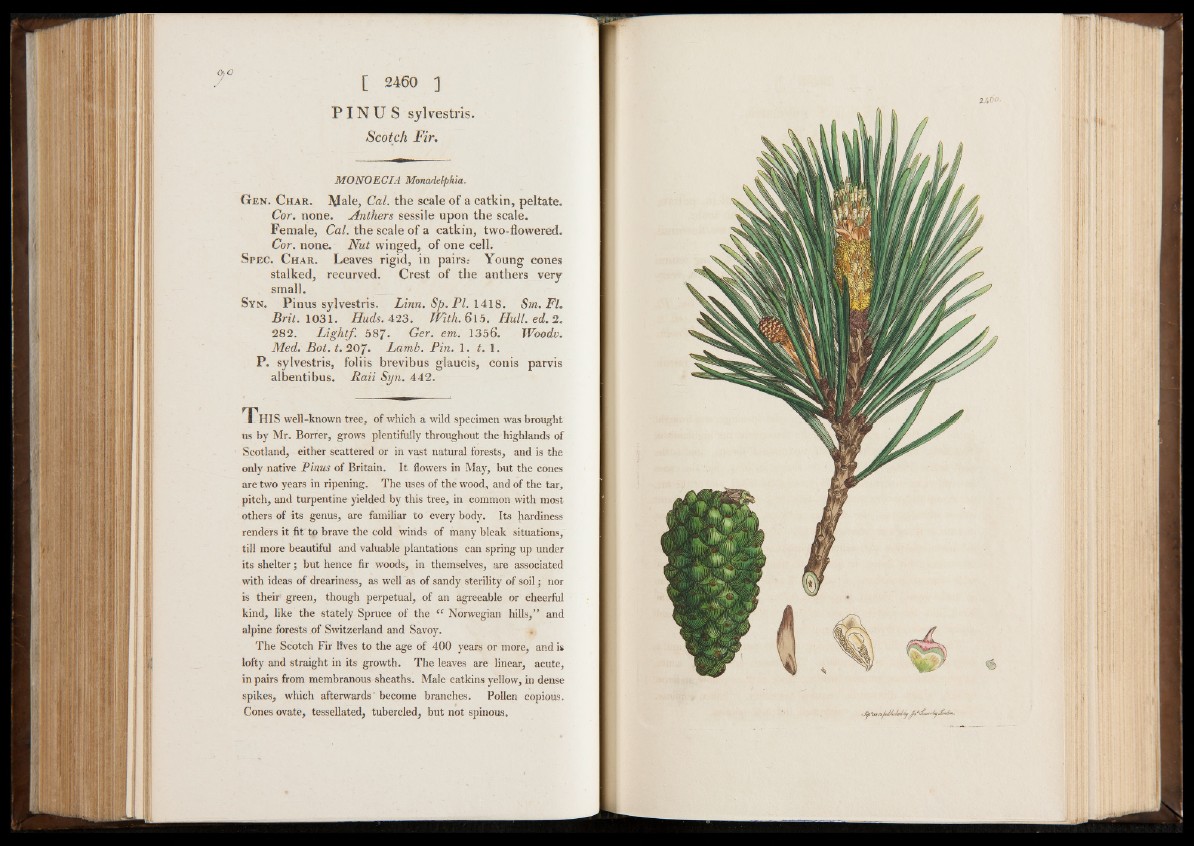
T [ 2460 ]
P I N U S sylvestris.
Scotch Fir.
MONOECIA Monadelpkia.
G en. Char. Male, Cal. the scale of a catkin, peltate.
Cor. none. Anthers sessile upon the scale.
Female, Cal. the scale of a catkin, two-flowered.
Cor. none. N u t winged, of one cell.
Spec. C har. Leaves rigid, in pairs.- Young cones
stalked, recurved. Crest of the anthers very
small.
Syn. Pinus sylvestris. L inn. Sp. PI. 1418. Srn. Fl.
B r it. 1031. Huds. 4 2 3 . W ith .6 \ 5. H u ll.ed .t2 .
282. L ig h lf. 58/. Ger. em. 135 6. Woodv.
Med. B ot. t.2 0 7 . Lamb. Pin. 1. t. 1.
P. sylvestris, foliis brevibus glaucis, conis parvis
albentibus. R a ii Syn. 442.
HIS well-known tree, of which a wild specimen was brought
us by Mr. Borrer, grows plentifully throughout the highlands of
Scotland, either scattered or in vast natural forests, and is the
only native Pinus of Britain. It flowers in May, but the cones
are two years in ripening. The uses of the wood, and of the tar,
pitch, and turpentine yielded by this tree, in common with most
others of its genus, are familiar to every body. Its Jiardiness
renders it fit to brave the cold winds of many bleak situations,
till more beautiful and valuable plantations can spring up under
its shelter; but hence fir woods, in themselves, are associated
with ideas of dreariness, as well as of sandy sterility of soil; nor
is their green, though perpetual, of an agreeable or cheerful
kind, like the stately Spruce of the “ Norwegian hills,” and
alpine forests of Switzerland and Savoy.
The Scotch Fir lives to the age of 400 years or more, and is
lofty and straight in its growth. The leaves are linear, acute,
in pairs from membranous sheaths. Male catkins yellow, in dense
spikes, which afterwards' become branches. Pollen copious.
Cones ovate, tessellated, tubercled, but not spinous.